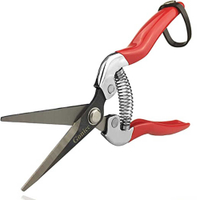How to deadhead zinnias – expert tips on when and how to cut these beautiful blooms back
Get more flowers from these heat-tolerant plants by giving them a prune
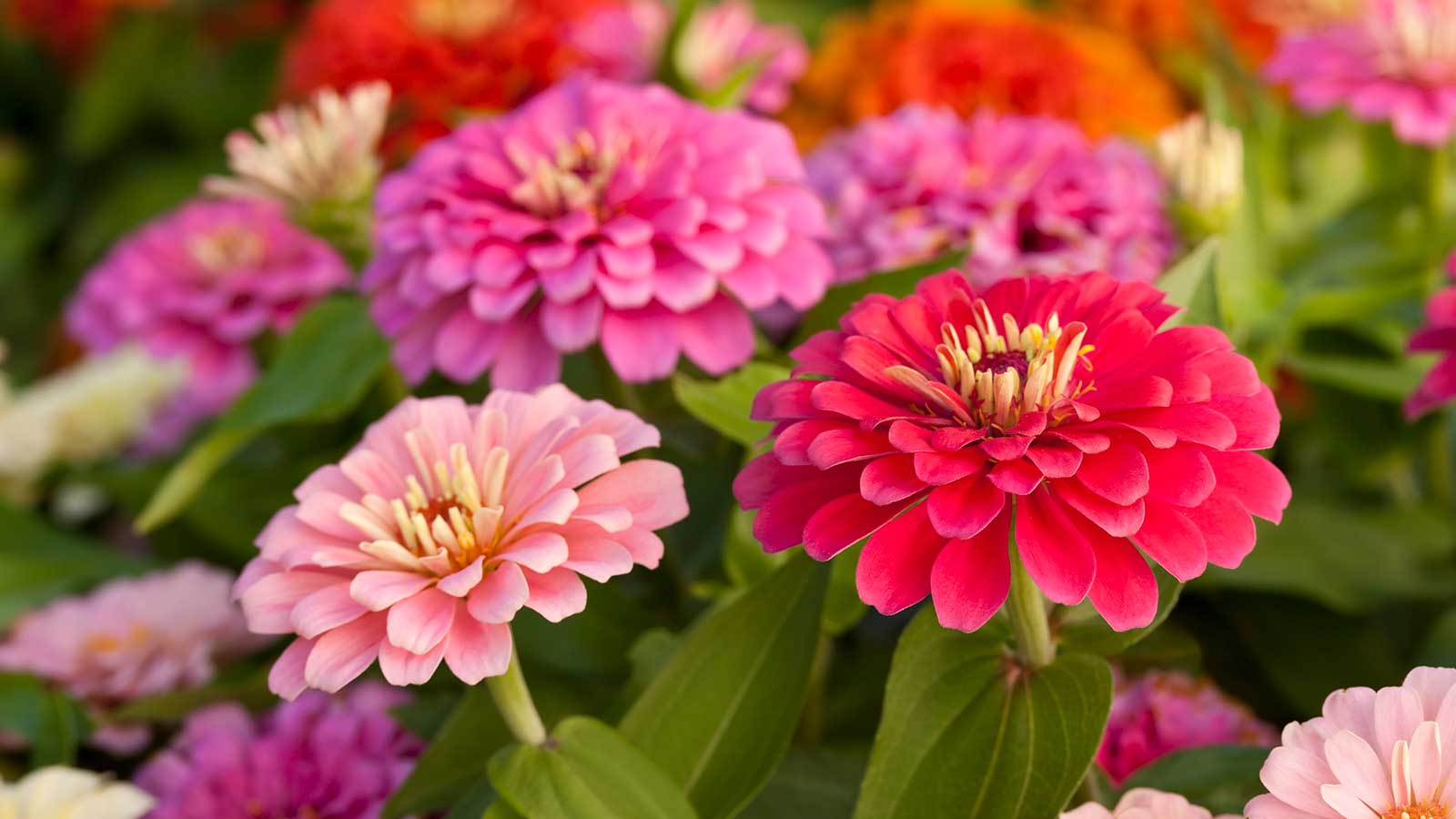

Zinnias bring a yard to life with their vibrant colors – from hot pinks and bright reds to lime greens. But if you want as many flowers as possible from these tough plants (don't we all?), you need to know how and when to deadhead them.
Many people grow zinnias in a cutting garden, as their long vase life makes them excellent for brightening the home. But, if you're not regularly harvesting your zinnias, any spent blooms need to be removed, advises Erin Benzakein of Floret Flowers. This helps focus the plants' energy on producing new flowers and not going to seed, she explains.
As well as deadheading your zinnias, you can pinch these plants back – an expert tip that will give you even more blooms. This guide explains the processes of both, so you can get the very best out of these beauties.

Zinnias come in a wide range of colors and shapes
How to deadhead zinnias
Gardening expert Tony O'Neill shares his three easy steps for deadheading zinnias below. The method is similar to deadheading coneflowers.
- Identify the faded flowers ready for removal.
- Cut the stem beneath each flower head, ideally above a leaf node or new bud, with a sharp, clean pair of gardening shears. This encourages new branching and blooms.
- Discard the cut flower heads into your compost bin to continue your garden's life cycle.
Gonicc Professional Micro-Tip Pruning Snips | $17.95 from Amazon
These ergonomic pruners are ideal for effortlessly cutting back your zinnia plants. Made from durable stainless steel, they're built to last.
When to deadhead zinnias
'Remove spent zinnia flowers throughout the growing season,' says Janet Loughrey, a gardening expert, adding that they are especially long-lasting on the plant. Wait until the flowers fade, shrivel, and start to turn brown before snipping them off, she advises.
Toward the end of the season, you can leave a few flowers intact so that they can develop seeds. In fact, forgetting to do so is a common deadheading mistake, as you'll miss the chance of getting new plants for free. Once ripe, the seeds can be collected and stored for sowing elsewhere in your garden, or you can allow them to self-sow where they naturally fall for an informal look.

Janet Loughrey has been a full-time garden photographer and writer for 25 years. She lives and gardens in Portland, Oregon. Previously, Janet gardened in the Adirondack region of upstate New York where she grew up. Experiencing different climates has given Janet a greater appreciation of the gardening challenges they present. In her own personal garden, Janet tends to an eclectic mix of roses, shrubs, perennials and bulbs. Her most recent passion is growing annual flowers in containers from seed.
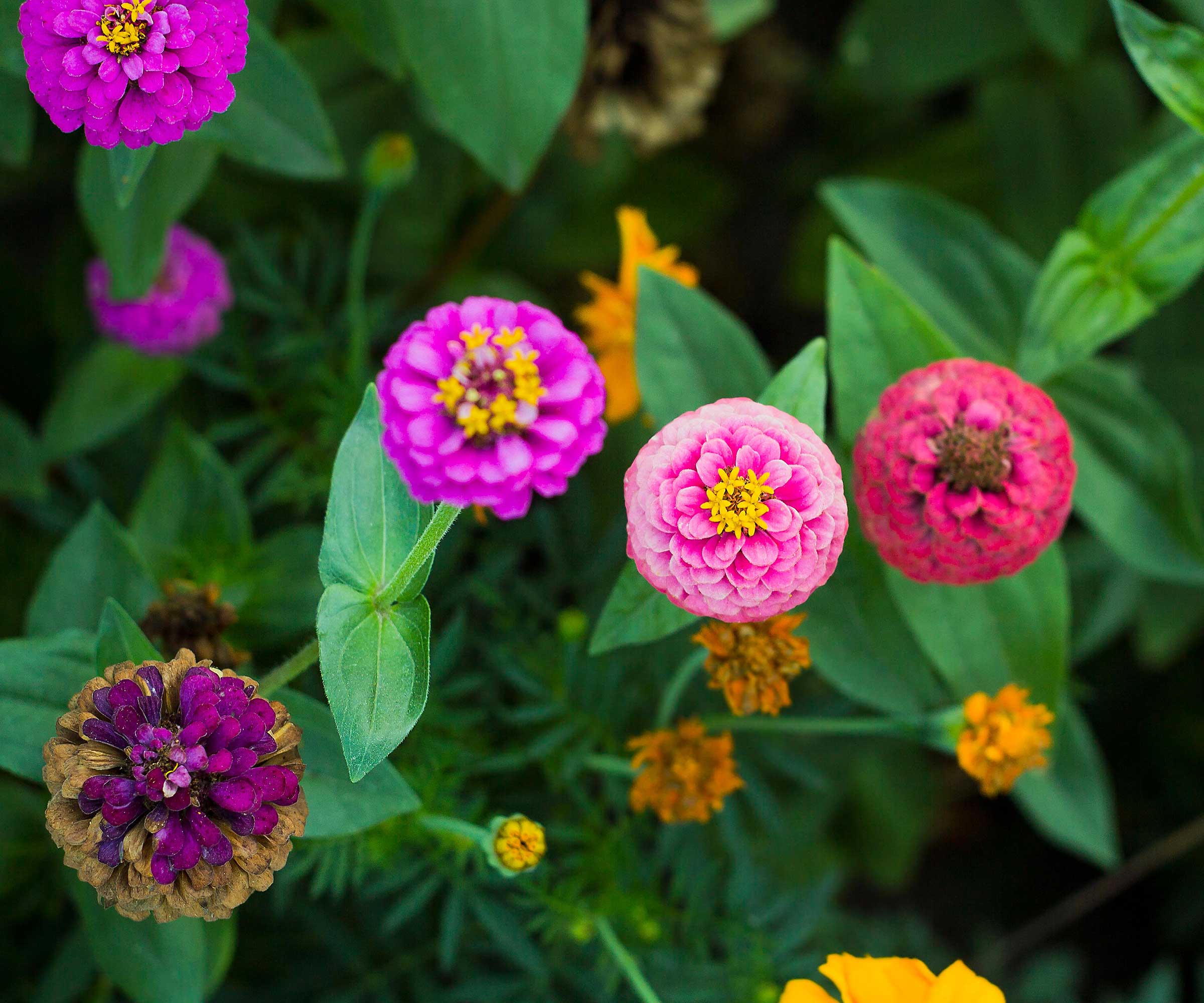
Freshen up your plants by removing wilted blooms
How to pinch back zinnias
'Pinching is when you snip out a portion of plant’s growth, encouraging it to branch out into multiple stems instead of putting its energy into one central stem,' explains Niki Irving, Farmer and Florist of Flourish Flower Farm. It also encourages longer stems, she adds.
Unlike deadheading, the pinching process is done to young plants, and sometimes you'll need to sacrifice the first flower. Don't let this put you off. By pinching zinnias, you will be rewarded with 10 or more stems per plant, says Niki. 'That is a lot of flowers from one little seed!'
It's simple to do. 'When plants are between eight to 12 inches tall, take sharp pruners and snip the top three-to-four inches off the plant, just above a set of leaves,' instructs Erin.
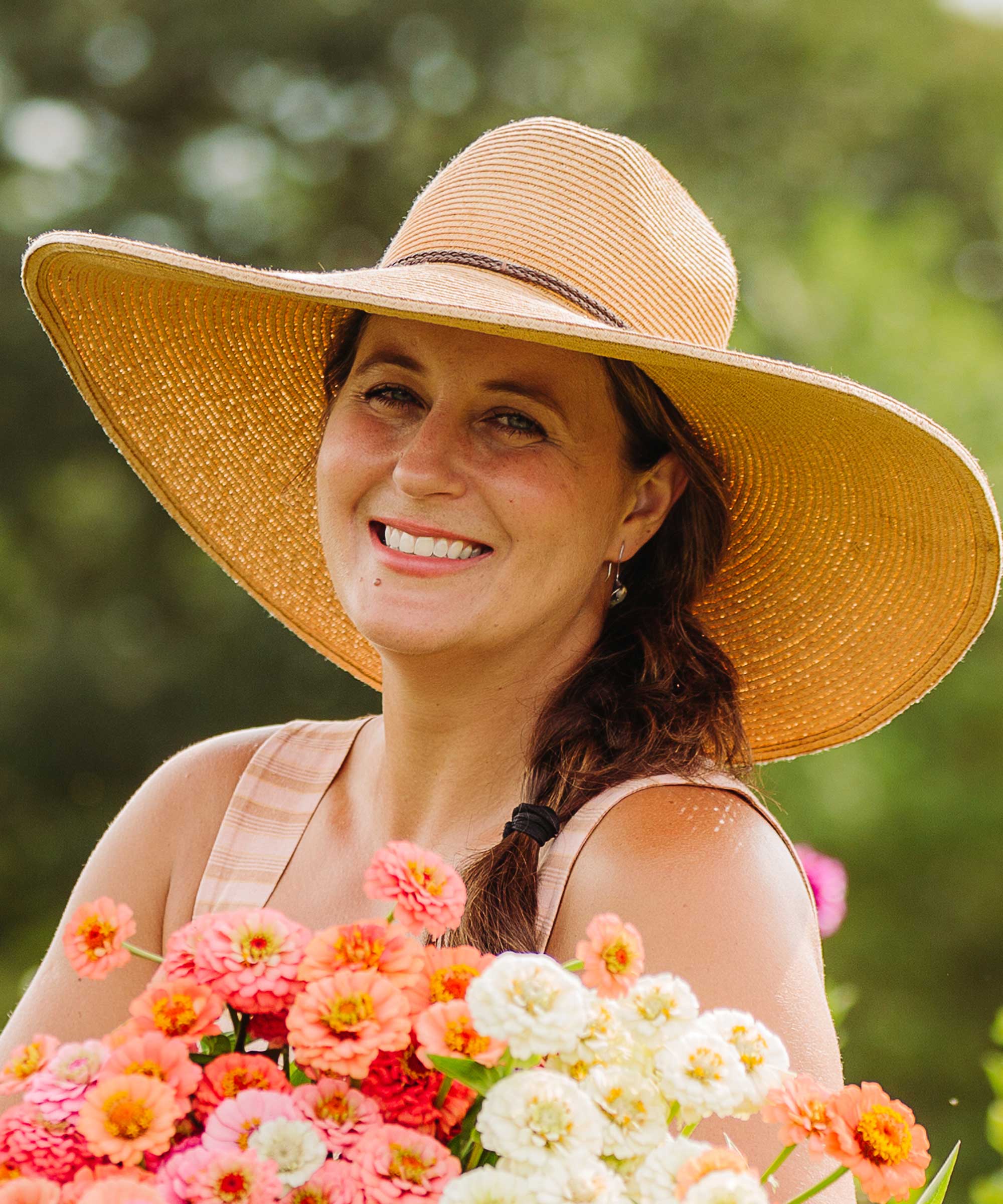
Niki Irving is the Owner, Farmer and Florist of Flourish Flower Farm in Asheville, NC. She creates lush, seasonally-inspired arrangements for weddings and special events with their gorgeous farm-fresh flowers, and hosts classes and workshops on her farm. Niki’s best-selling book Growing Flowers: Everything You Need to Know About Planting, Tending, Harvesting and Arranging Beautiful Blooms was published in Spring 2021. She serves on the board of the Association of Specialty Cut Flowers as the Southeastern Regional Director.
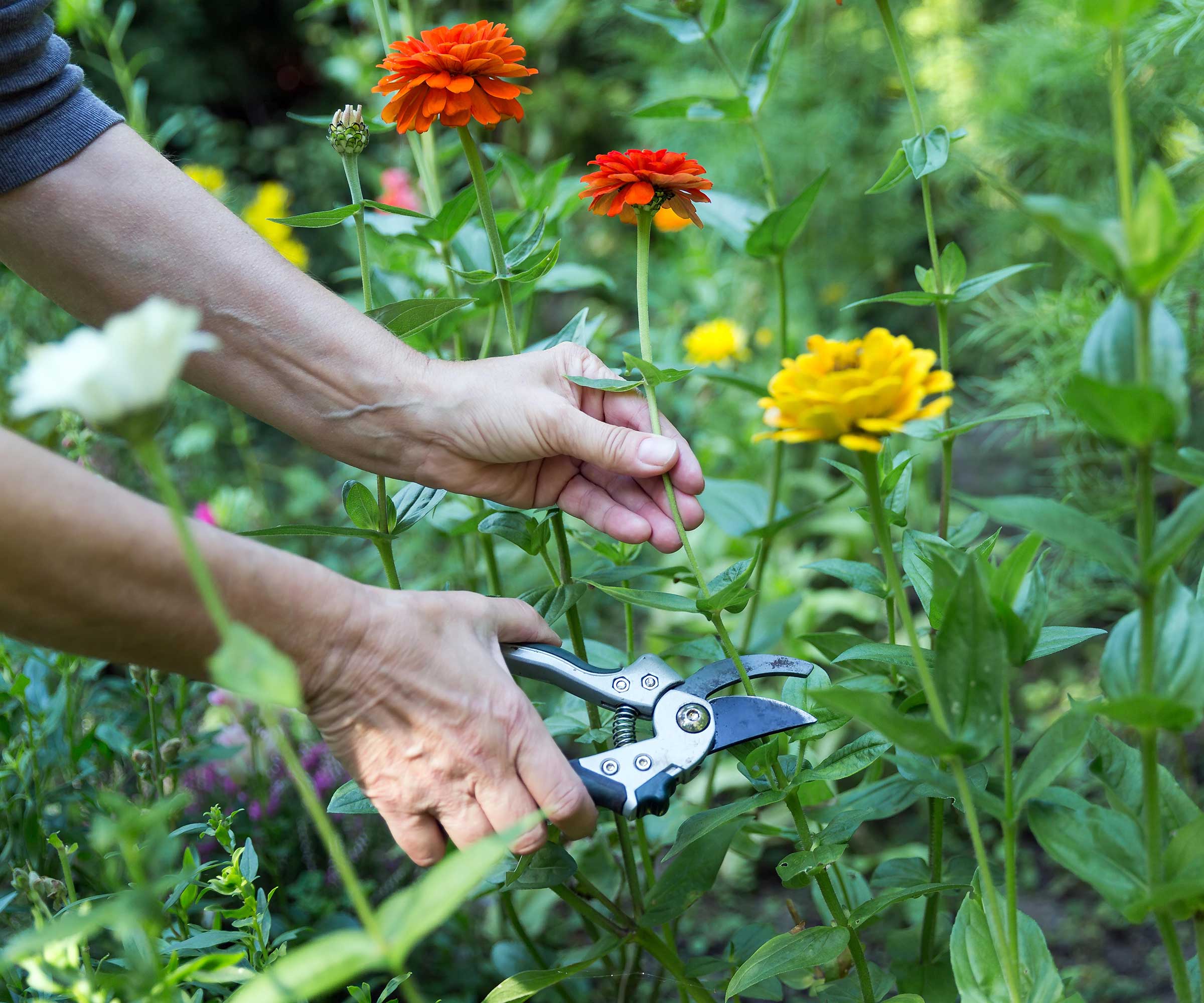
You may need to remove the first flower when pinching out your zinnias
Whether you're growing zinnias in billowing borders or in pots for full sun (where they thrive), snipping them back when needed is totally worth the effort. So, for your best flowers yet, make sure you add it to your to-do list – it's one of those 'little and often' gardening jobs that makes all the difference.
Sign up to the Homes & Gardens newsletter
Design expertise in your inbox – from inspiring decorating ideas and beautiful celebrity homes to practical gardening advice and shopping round-ups.

Holly started writing about gardening five years ago, and she is a regular contributor to Homes & Gardens. She has also written many gardening features for Woman & Home and Real Homes, too. She has previous experience as a professional gardener, where she helped to plant and maintain private gardens. Holly has also looked after allotment plots over the years and loves to grow her own flowers and veggies from seed. In her spare time, she enjoys visiting local gardens, botanical drawing, and tending to her ever-growing collection of houseplants.
-
 Emily Blunt gifted Cillian Murphy this $545 pillow – she's 'obsessed' with these luxury pillows, and frankly, so are we
Emily Blunt gifted Cillian Murphy this $545 pillow – she's 'obsessed' with these luxury pillows, and frankly, so are weThe Oppenheimer stars sleep on this ultra-luxe goose down pillow – here's why we love it – plus our affordable alternatives from $35
By Sophie Edwards Published
-
 The great bedding debate: top sheet vs no top sheet − which side are you on?
The great bedding debate: top sheet vs no top sheet − which side are you on?I asked an expert panel of bedding designers whether you really need a top sheet to keep clean and cool or if it's just another ploy to make you spend money
By Emilia Hitching Published
